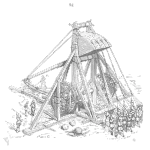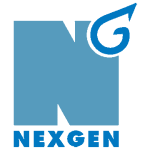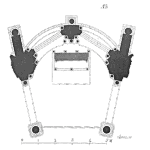
Ramesh Gulati and George Williams discuss Asset Criticality!
[Read more…]Your Reliability Engineering Professional Development Site
Find all articles across all article series listed in reverse chronological order.
by Ramesh Gulati Leave a Comment
by Ray Harkins Leave a Comment

A common first step in the learning journey of a quality engineer is mastering a set of data visualization tools called the “Seven Basic Quality Tools.” Popularized by an architect of the modern quality movement, Karou Ishikawa, the seven basic quality tools allow practitioners to readily extract useful insights from raw data and build a foundation for further statistical analysis. These tools stand as pillars of systematic problem-solving, aiding in the identification, analysis, and improvement of processes.
These seven tools, in order of complexity, are: Check Sheets, Flowcharts, Cause and Effect Diagrams, Histograms, Pareto Diagrams, Scatter Plots, and Control Charts.
[Read more…]by André-Michel Ferrari 2 Comments

A proper CMMS (Computerized Maintenance Management System) setup can make a world of difference in an organization’s asset management journey. Conversely, a substandard setup can be a living hell for Reliability Engineers like myself and other analysts. I have personally wasted hundreds of hours of my work life sifting through a poor CMMS structure trying to find records. Ever wanted to make your Reliability Analysts more productive and engaged? If yes, then this article highlights 10 highly recommended set-up requirements.
[Read more…]We launched Communicating with FINESSE two years ago to help technically trained professionals become better communicators and facilitators. Breaking it away from JD Solomon, Inc. as a not-for-profit organization was a first step in building a broader community to execute the mission. We have done that in many ways, although such endeavors never go as fast as you first imagine. Today, we summarize seven key concepts of Communicating with FINESSE.
The good news for most of us is that communication is indeed a system. Even better, as technical professionals, we are blessed with the reality of what that means. The next time you serve as a trusted advisor, remember that effective communication requires systems thinking.
Why Systems Thinking Produces Effective Communication – Accendo Reliability
[Read more…]by Fred Schenkelberg Leave a Comment

Let’s look at the characteristics of a sound reliability metric and how MTBF is not true or beneficial. A metric should be true, beneficial, and timely. We’ll start with a rock climbing analogy.
A bolted hanger along a rock climbing route is often a welcome site. It provides the climber safety (clipping the rope to the bolt), direction (this is the way), and confidence. Does MTBF as a metric do the same for your organization?
As climbers, we count on the bolts to provide support in case something goes wrong or we need to rest along the route.
A reliability metric is often used in the same way as a climbing bolt. The measure, whether MTBF, Reliability, or Failure Rate, assures that the product’s reliability performance is as expected.
The organization’s profits are or will be safe. The development team uses the measures to guide design and supply chain decisions. The measure provides confidence to the organization regarding meeting customer expectations around reliability.
[Read more…]
Robustness: That Often Overlooked Yet Powerful Discipline and Toolset. Most companies have a Quality organization, and some have a Reliability organization. But rarely will you find a company with a Robustness organization or even a single Robustness Engineer. And yet, of these three disciplines, Robustness can have the largest impact on your customer satisfaction because Robustness as a discipline and toolset addresses:
by Greg Hutchins Leave a Comment

This article is the eleventh of fourteen parts to our risk management series. The series will be taking a look at the risk management guidelines under the ISO 31000 Standard to help you better understand them and how they relate to your own risk management activities. In doing so, we’ll be walking through the core aspects of the Standard and giving you practical guidance on how to implement it.
In previous articles we’ve looked at the core elements of the risk management framework, as well as the role of leadership and commitment, integration, design, implementation, evaluation and improvement more specifically. We’ve also briefly looked at the risk management process in a general sense, and we’ve also focused on the importance of communication and consultation, as well as how to set your scope, context and criteria. In this article, we’ll be looking at risk assessments and the role of risk identification, analysis and evaluation in such assessments.
[Read more…]by Mike Sondalini Leave a Comment

Let a Plant Wellness Way EAM System-of-Reliability halve your Annual Maintenance Costs
A Plant Wellness Way enterprise asset management system is a powerful solution for world class enterprise asset management (EAM) success. There are three scenarios when it is justifiable for a business to adopt PWW EAM as your company’s EAM methodology.
[Read more…]by Lindsay Walker Leave a Comment

For conscientious plant managers and production leaders, achieving successful and sustainable Total Productive Maintenance (TPM) is a top priority. TPM is the key to reducing downtime, preventing breakdowns, and ensuring top-notch product quality during the process of manufacturing maintenance. But how do you put a TPM plan into action, and what steps should you follow to seamlessly integrate it into your existing operations and maintenance procedures? Keep reading, and we’ll break down what TPM is, how to implement it step by step, and why it matters. [Read more…]
by Hemant Urdhwareshe Leave a Comment

This video explains step-by-step procedure for probability plotting of failure data. Probability plotting is a technique used to determine whether given data of failures follows a distribution. The video also explains various types of failure data: complete, right censored, left censored and interval censored data. Viewers can try Weibull Probability Plotting to estimate shape parameter beta and scale parameter Eta. The video also shows how to estimate median rank for complete data.
[Read more…]by Nancy Regan Leave a Comment

Do you ever mutter to yourself: “Reliability Centered Maintenance, FMEA, FMECA, and CBM? I’m so confused! Where do I even start?” If so, don’t skip this one!
[Read more…]by Sanjeev Saraf Leave a Comment

Nihon Sandai Jitsuroku – is an ancient Japanese text compiled in 901.
It talks about an earthquake and Tsunami that occurred in 869:
“Then the sea began roaring like a big thunderstorm. The sea surface rose up and the huge waves attached the land”
People died in landslide or were crushed by the collapse of their homes.
[Read more…]
These two books help technical professionals improve their communication and collaboration skills. Employers seek soft skills across the many market sectors to complement the technical skills they assume are present. These two groundbreaking books provide the fuel to propel your career.
The results of our work often depend on the quality of the facilitation. Facilitating with FINESSE addresses ways to improve interactive, peer-to-peer communication when working in teams.
The book provides the techniques to facilitate ten different technical applications from good to great. [Read more…]
by Robert (Bob) J. Latino Leave a Comment

In this episode, we will discuss tips for applying leadership support to promote a reliability culture in your plant.
by André-Michel Ferrari 1 Comment

Building a Reliability, Availability and Maintainability (RAM) model can provide numerous benefits to an Asset Management program. This includes conducting a Criticality Analysis. Criticality Analysis involves ranking assets based on their potential risk to the organization. It considers risk categories such as Production Impact, Safety, Environment, and Reputation, amongst others. The category list can vary and is a reflection of the organization’s structure. Organizations generally have a finite financial pool allocated to preserving asset function. A Criticality Analysis helps optimize the allocation of resources to each asset according to its importance in the system network. Ultimately this helps maximize revenue, minimize spend and maintain the organization’s license to operate.
[Read more…]